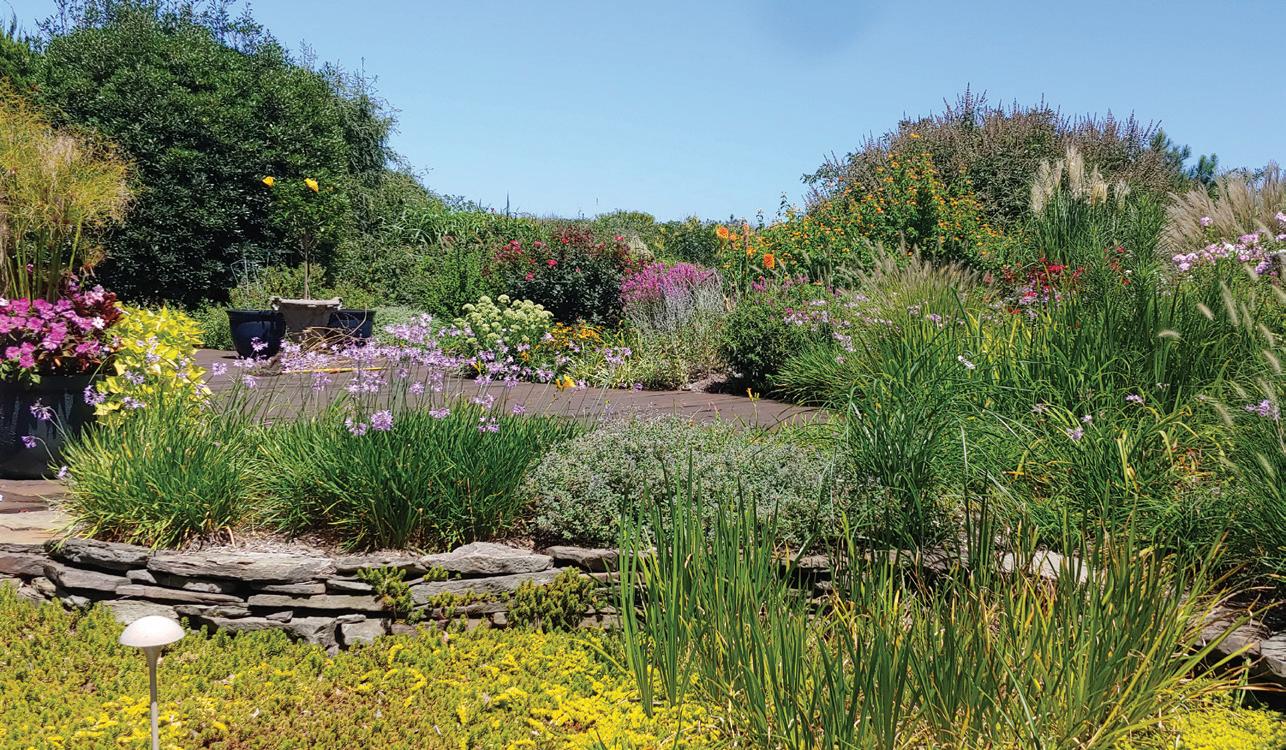
3 minute read
Cover Story
The Only Twenty
By Wes Bray, Lawns & Gardens Plus
Advertisement
Wes and Paula Bray, owners of Lawns and Gardens Plus, have had great success in establishing and maintaining a plethora of lawns, gardens and landscapes in their 34 years in business. Wes currently serves as Vice President on the VTC Board and has contributed immensely to the success of the VTC-EI through sponsorship of the Come to the Bay service project and other efforts by VTC and VTC-EI.

The primary and secondary dunes offer great protection from NE winds.
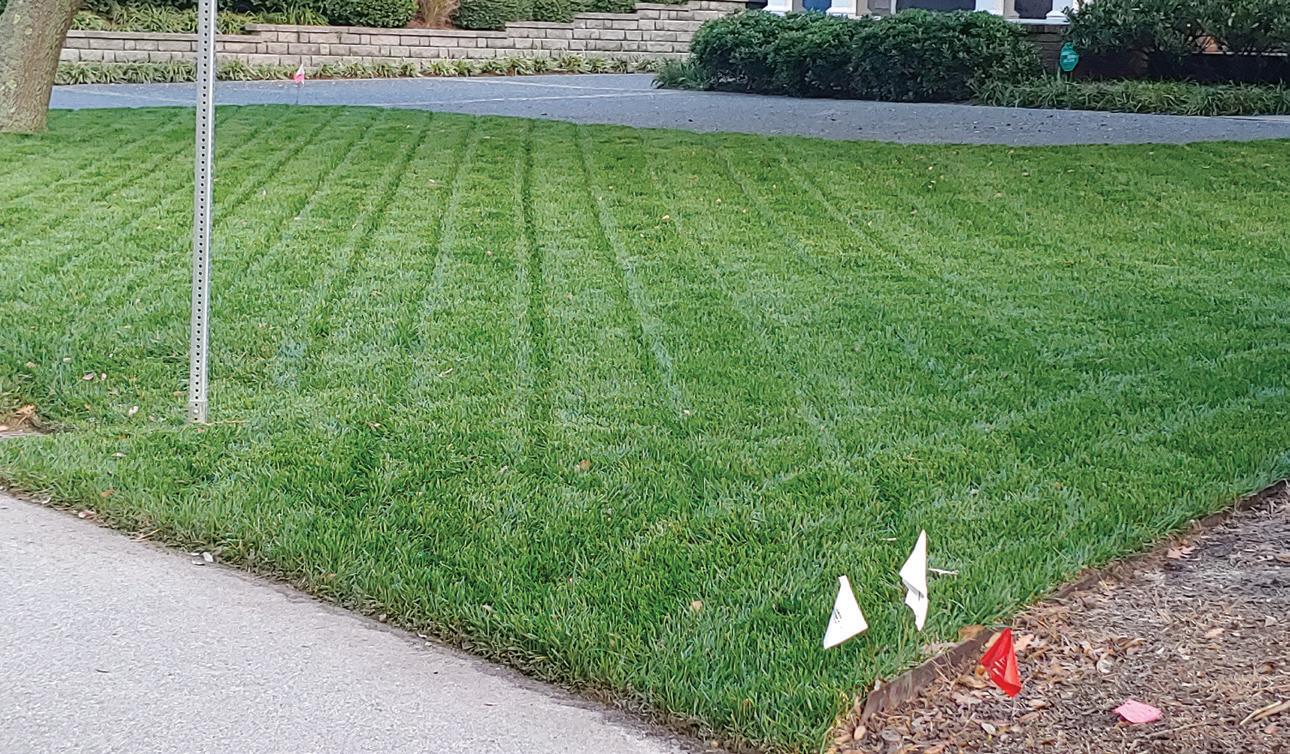
Tall Fescue can tolerate occasional salt spray from NE winds.
At this year’s Come to the Bay, Wes shared his knowledge and experience in establishing and maintaining beautiful oceanfront landscapes. The presentation, titled “The Only Twenty” highlighted the limited palette of plants that can be used in landscapes close to or next to the ocean. The “Only Twenty” concept applies not just to Virginia Beach, but also to coastal North Carolina and likely the entire Eastern Shore of Virginia and Maryland.

Dune protection provides micro climate that allows the Hydrangea to flourish.
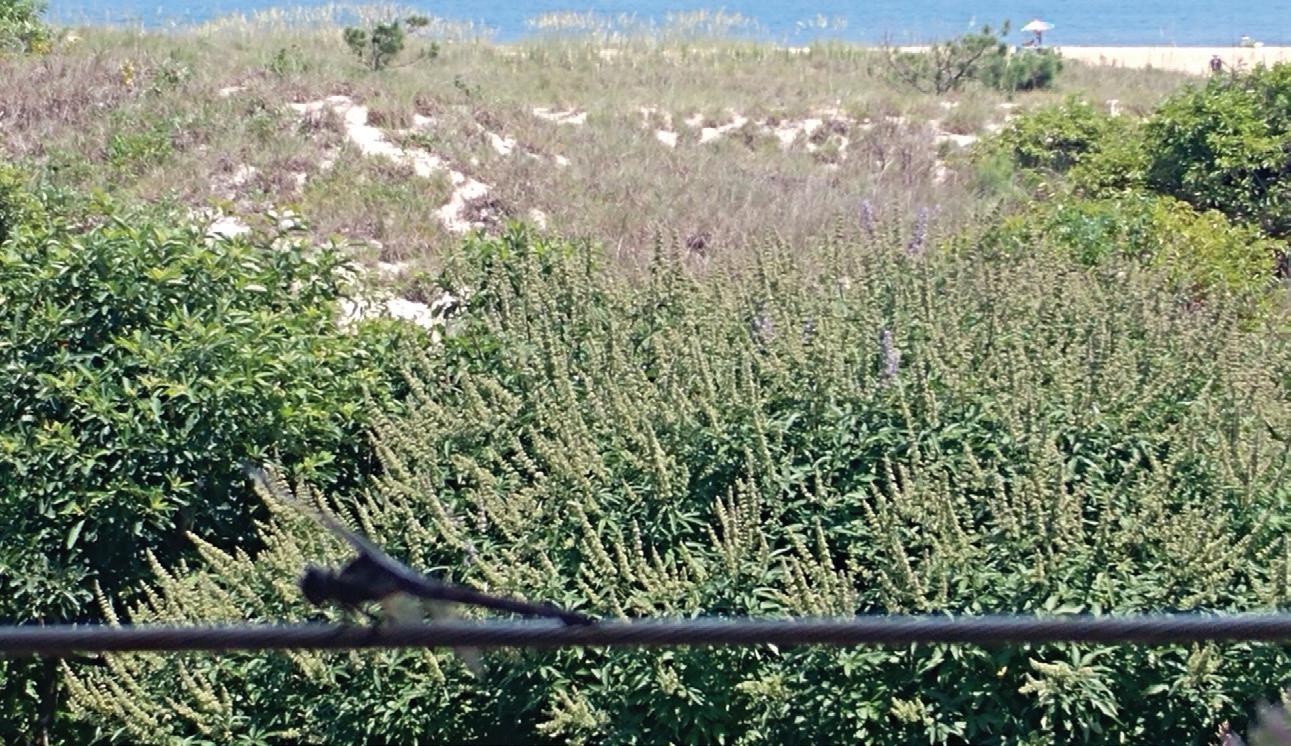
American beach grass provides a great background for the Vitex.
Wes explains that while the Virginia shoreline is in the transition zone and technically you can grow anything, you can’t necessarily grow it well. He credits Paula with the business’s success in this area. “We have been in business for 34 years working in the oceanfront area, and most of the beautiful flowers in these pictures are because of her and her efforts. In fact, several of our clients have said ‘Don’t let anything happen to Paula. I can get anyone to cut the grass but there’s only one Paula’.”
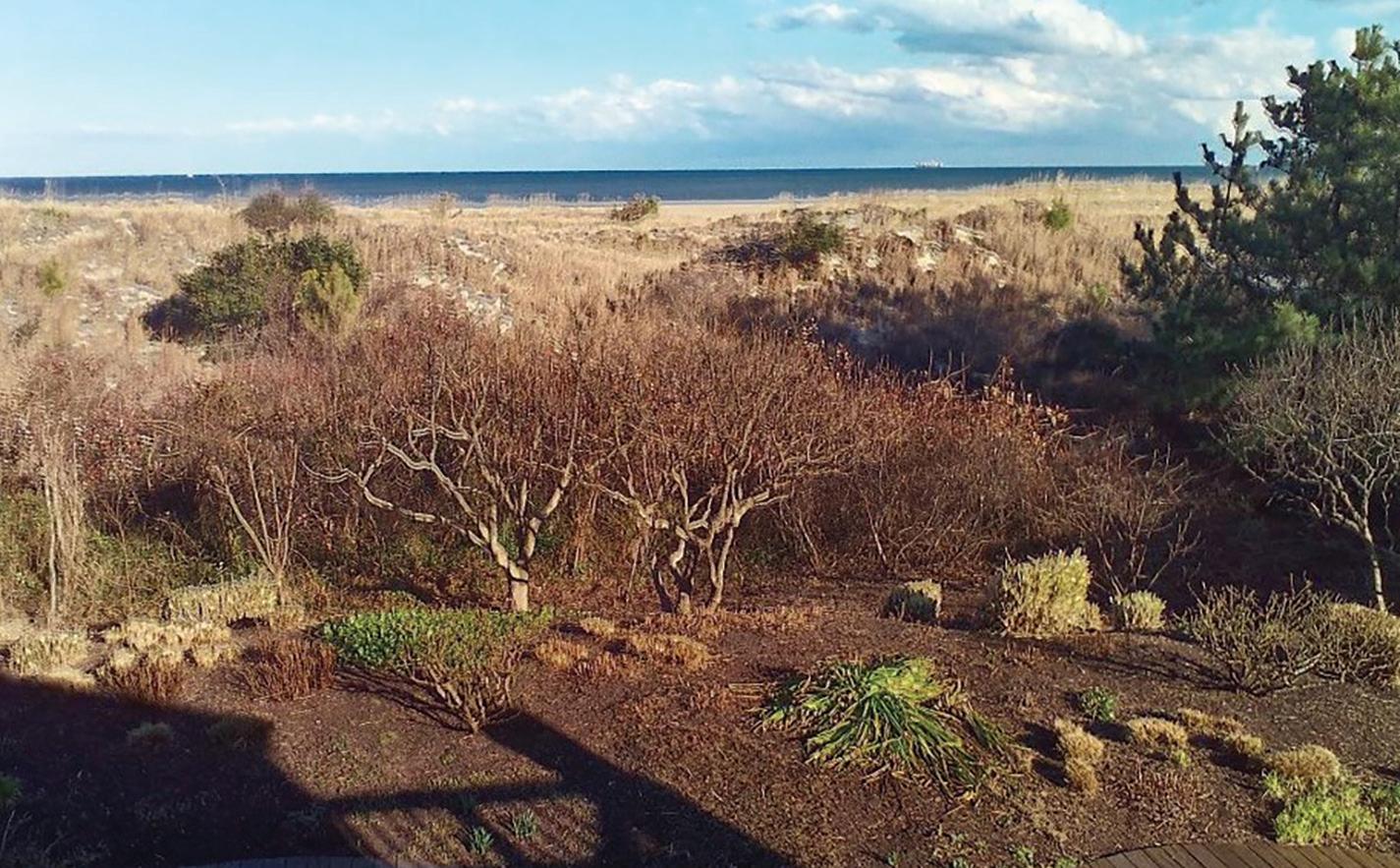
The beauty of the dunes in winter takes focus off the perennial gardens.

Come springtime, the beauty of the perennial garden is back.
Regardless of the source of their success, Wes and Paula, along with their staff, have surely made great contributions to not only the lawn and landscape industry, but to the natural beauty of the Virginia Oceanfront.
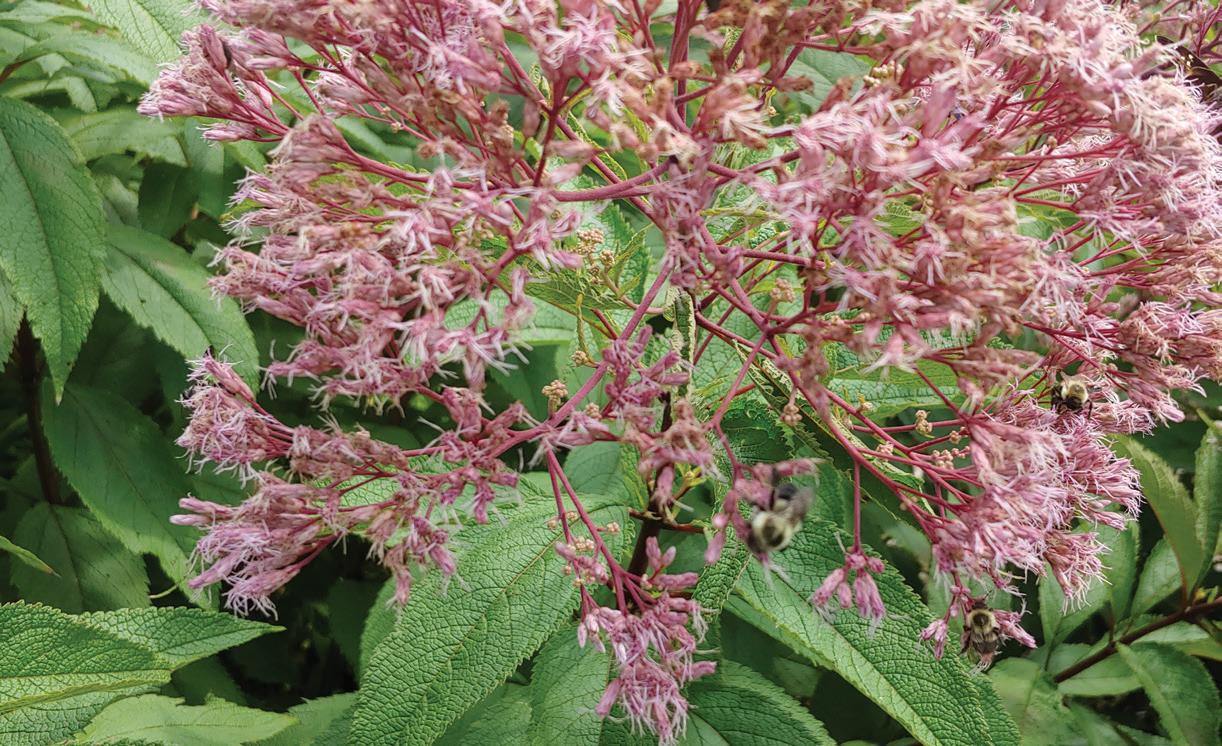
Joe Pye weed is a native that thrives with proper irrigation.

Bermuda turfgrass is virtually indestructible at oceanfront.
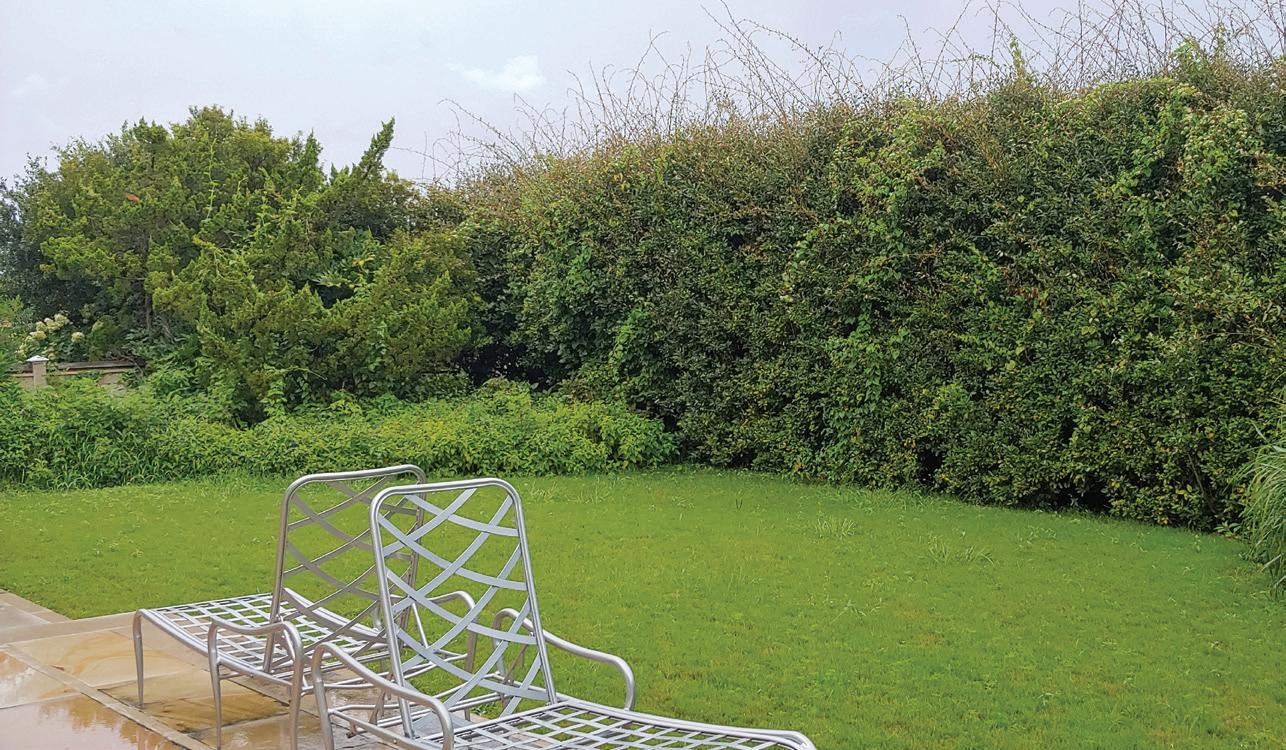
Bermuda turfgrass and Elaeagnus would take over the dunes if allowed.
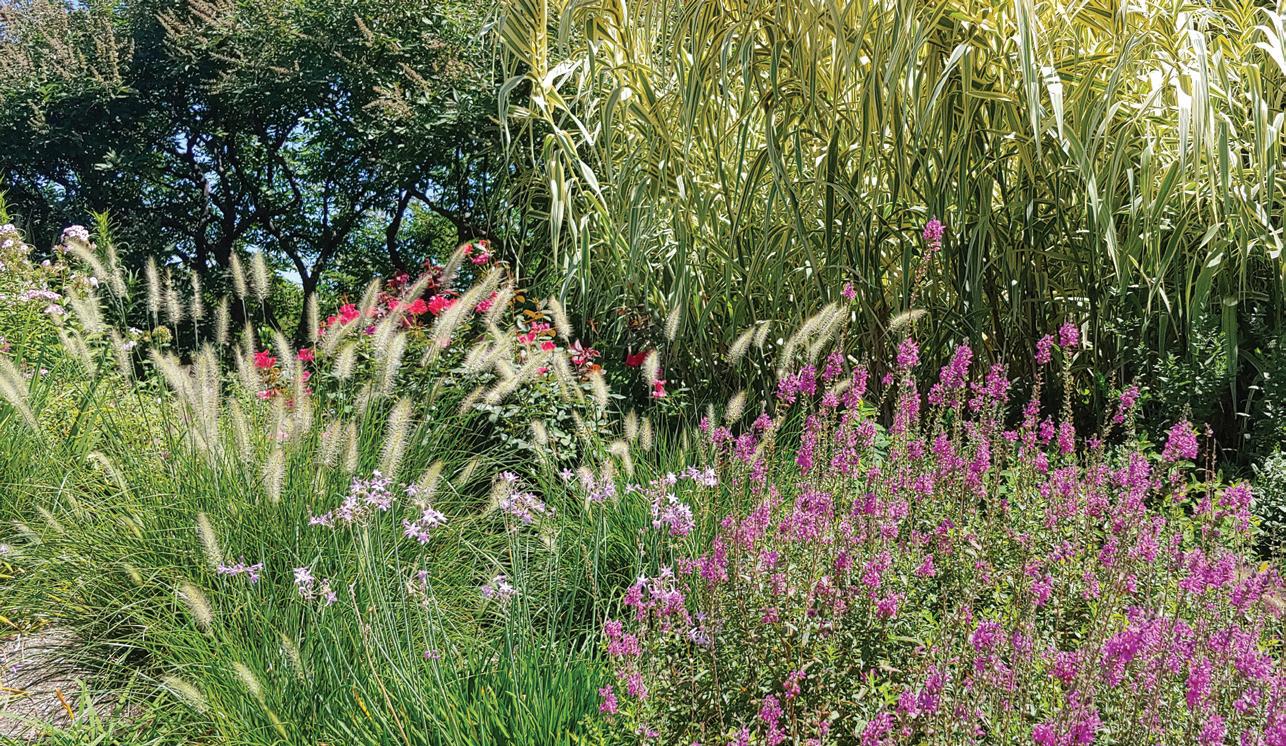
Ornamental grasses thrive and some can become invasive if not managed.
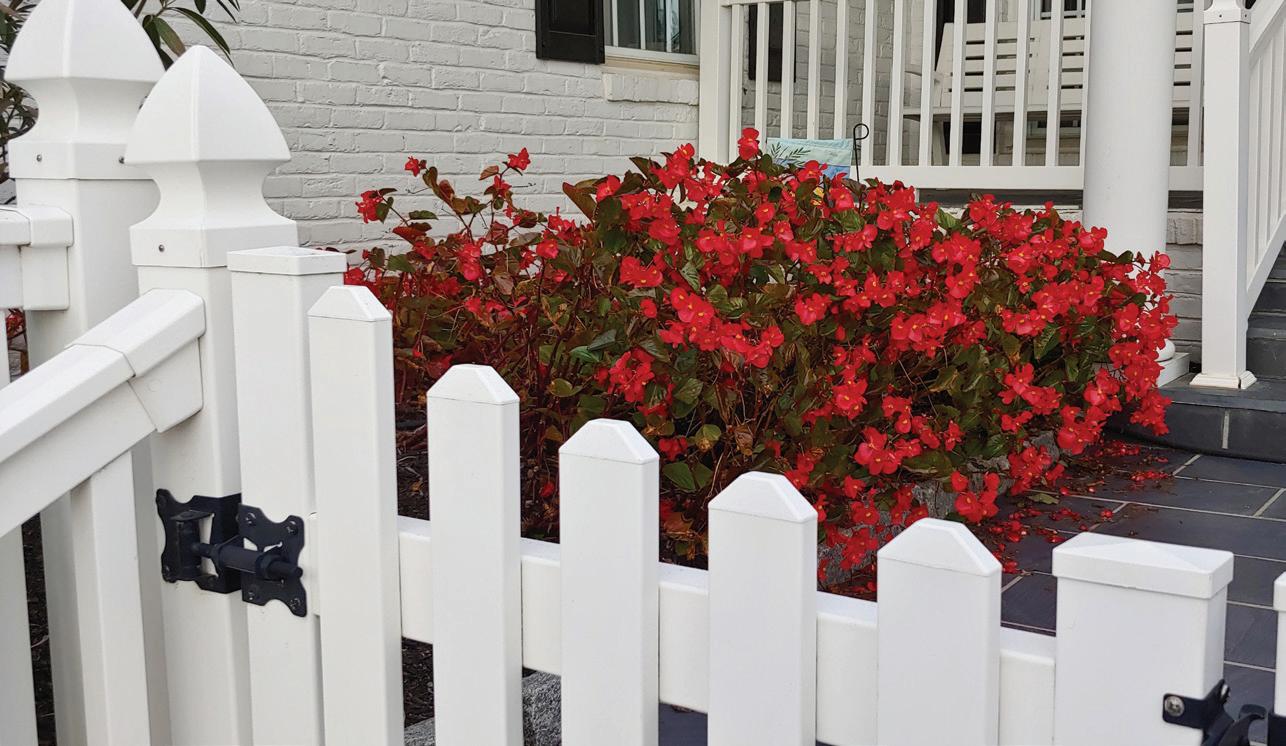
Red Dragon leaf Begonia sheltered from ocean winds are impressive!

Miscanthus grass with Roses and native Phlox.
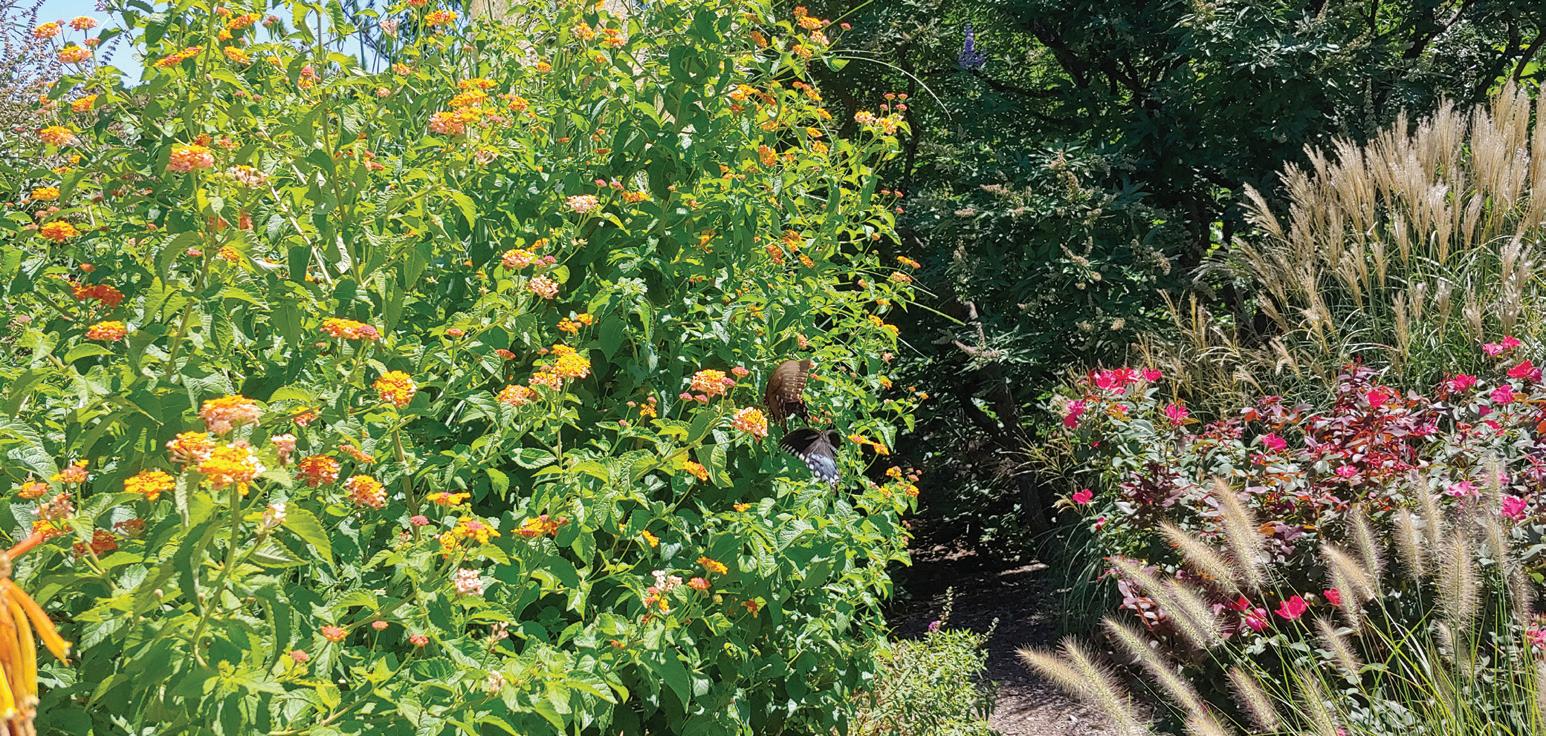
Lantana brings the many pollinators to the oceanfront garden.
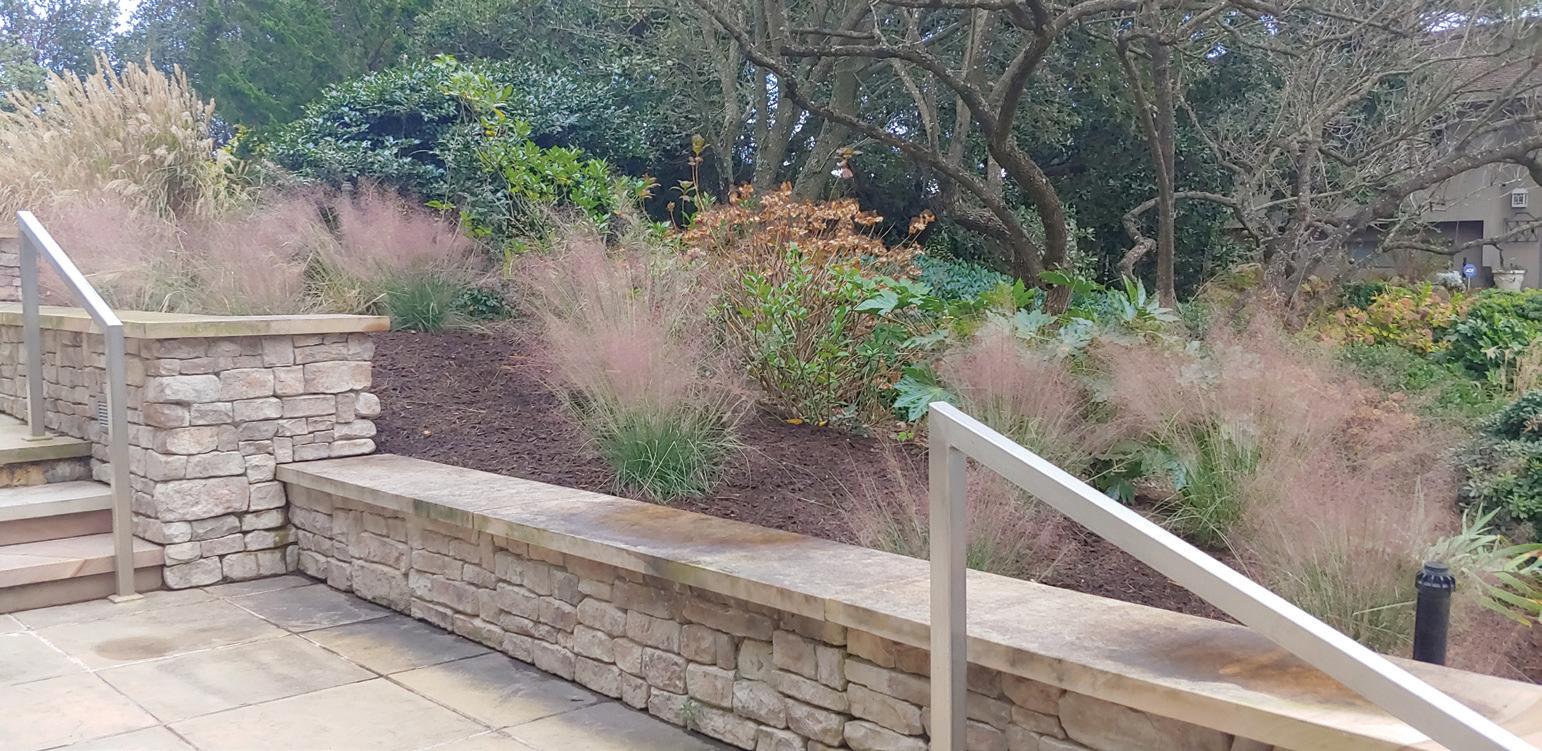
Native Muhly grass enhances the landscape at the oceanfront.
The ONLY 20 PLANT LIST
JUNIPER
Hollywood, Shore, Blue rug
CRAPE MYRTLE
HOLLY
Yaupon, American, Burford
ORNAMENTAL GRASSES
Pampas, Fountain, Miscanthus, Muhly
HYDRANGEA
Paniculata, Macrophylla
EUONYMUS
RIVER BIRCH
PIERIS
INDIAN HAWTHORNE
LIVE OAK
WINDMILL PALM
CAMELLIA
LIGUSTRUM
FATSIA
PITTOSPORUM
ITALIAN CYPRESS
MAGNOLIA
VITEX
ROSE
TURFGRASS
Fescue, Bermuda
ASSORTED PERENNIALS
Lantana, Hemerocallis, Rudbeckia, Daisy, Coneflower, Nepeta ,Hibiscus, Echinacea, Perovskia, Acanthus
“These plants will thrive at the oceanfront if placed in the right cultural environment-- shade, sun, irrigated, non-irrigated, etc.,” Wes says. “Regular maintenance is very important: pruning, trimming, fertilizing, insect controls, removing blown in sand. We schedule monthly maintenance (or more frequent) to monitor conditions.”





